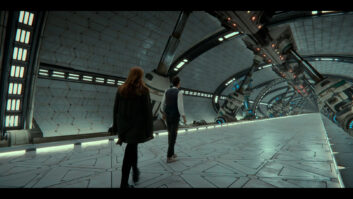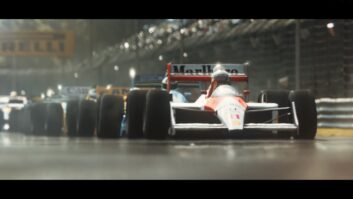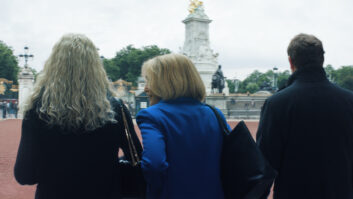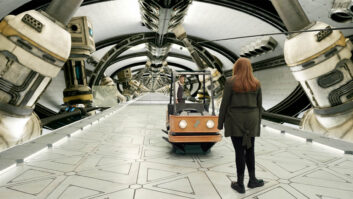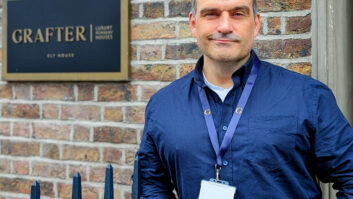Design studio Painting Practice has revealed details of its world building, visual development work on all three of the 60th anniversary Doctor Who special episodes.
Working closely with producers Bad Wolf, production designer Phil Sims and VFX producer Will Cohen, Painting Practice served as the project’s digital art department, delivering concept design, hybrid virtual production previz, post viz, motion graphics and VFX design and supervision.
The work included adapting Dave Gibbons and Pat Mills comic-book iteration of the Meep and Wrath soldiers for the screen; VFX asset creation, set extensions and previsualisation for the Meep Spaceship and Escape Pod; pre visualising the fiery ‘London Cracking’ phenomenon and the Doctor’s regeneration sequence, as well as shot design and planning for establishing the Unit Tower; achieving the ‘infinite’ Ghost Ship corridor using hybrid virtual production previsualisation and VFX; developing the new Tardis interior as a virtual reality asset; establishing the graphic language for the Doctor’s new Sonic Screen and working out how to make the giant Toymaker’s Theatre fold into a tiny box.
Tom Kingsley, who directed Wild BlueYonder said: “Working with Dan May and the team at Painting Practice was a really creative and collaborative experience – the most fun bit of the whole production. It was hugely creatively freeing working on pre-vis so quickly and nimbly. It meant we could dream big, sketch out lots of avenues to pursue, and find out if something wasn’t working well in advance of getting to the set.
“We could keep testing out different versions of big action sequences during the writing process – so we could rewrite the script to match the animatic, and keep going back and forth with input from all departments as to what would be most achievable and look the best. I could do a scrappy sketch of an idea, and later that day the brilliant concept artists would have transformed it into something far better, to properly help sell the idea to the execs and showrunner.”
